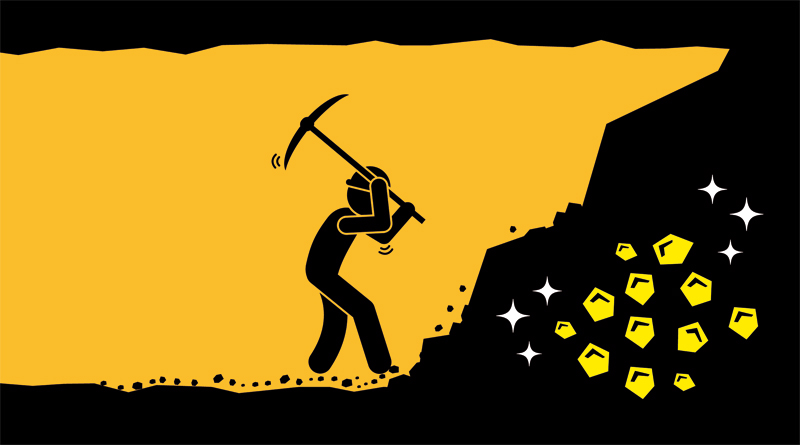

Helen Reid, Barbara Lewis and Emmanuel Herman -
A new network of government-controlled trading centres was meant to ensure Tanzania’s small-scale miners got a bigger share of the country’s mineral wealth. But most still can’t get a foot in the door. Literally.
Entry to the 28 exchanges scattered around the East African nation is restricted to those who can afford the licenses needed to sell the precious metals, which at around $44, is beyond the means of most small-scale miners who often run up debts just to extract gold and other precious metals from rented land.
That means they are effectively excluded from trading on these formal marketplaces — the centrepiece of President John Magufuli’s drive to curb the black market in mineral wealth.
Magufuli has built his base by promising to empower poor Tanzanians, and his attempts to formalise the sale of gold and other minerals are seen as progressive compared to other countries, such as neighbouring Democratic Republic of Congo, where there have been violent crackdowns on informal miners.
The new mineral trading centres make pricing more transparent, but there is no law that guarantees the miners a fair share.
Instead, the new system has strengthened the position of pit owners and, in particular, the middlemen who help finance them, according to small-scale miners, analysts and non-governmental organisations.
It has also poured money from royalties and clearance fees into government coffers since its inception in March.
Known locally as dealers or brokers, middlemen have traditionally controlled Tanzania’s vast informal mining sector, through the loans they make to miners and pit owners and their ownership of many of the facilities used to process the gold.
Dealers own the majority of the trading licenses needed to buy minerals in the exchanges, and pit owners own the majority of the mining licenses needed to sell in them, according to Tanzania’s Mining Commission, which is the government department that issues the licenses and oversees the industry.
“The concern is we have a new class of mining entrepreneurs,” said Edward Hobey-Hamsher, analyst at Verisk Maplecroft, a consultancy.
“It’s the workers at the bottom who are the most vulnerable and will continue to be.” Since 2000, 29,000 mining licenses have been distributed, including 3,000 between July 1, 2018 and June 31, 2019, according to Professor Shukrani Manya, head of the Mining Commission.
That compares to an estimated 6 million people who work as informal miners, according to The Tanzania Mines, Energy, Construction and Allied Workers’ Union (TAMICO), mostly mining gold after its price rose 16 per cent this year.
TAMICO said it did not see dealers as obstacles to fair prices for miners but said they would have higher earnings if they bargained collectively, in a union.
Thomas Munis, chairman of the Tanzania Mineral Dealers’ Association (TAMIDA), denied that dealers, who number around 50,000 in Tanzania, exploited miners. “These arrangements with the artisanal miners are legally binding and everyone is protected by the contracts signed,” he said on the sidelines of a meeting of small-scale miners in Tanga, a port city north of the capital, Dar es Salaam.
“There is no chance for anyone to be exploited.”
A FAIR SHARE
Artisanal mining plays a key role in the wider mining sector because it can rapidly increase supply when prices rise. But it is dangerous with frequent accidents and the risk of contamination from the use of mercury, a highly poisonous substance, to recover gold particles from soil.
It can also be a hard way to make a living.
Even before they put a shovel in the ground, miners have to pay rent on the land they dig, which works out at around 45,000 Tanzanian shillings ($19.58) per year per acre, according to TAMICO, a large amount in a country where the average annual income is around $881, according to a 2017 analysis by the World Bank.
Instead of a regular wage, miners have production-sharing arrangements with pit owners. The pit owners, in turn, often give the dealers the right to process the metal and sell it on, because they are in debt to them.
The dealers usually divvy up the proceeds. Sometimes, if the miners strike lucky and the price is high, that can mean a windfall but much depends on how the takings are split.
Dealers typically take around 30 per cent of the proceeds themselves, with another 30 per cent going to the pit owner and the remainder split between ten or more mine workers.
“Most artisanal miners depend on brokers for almost everything including food,” said Paulo Maliganya, a small-scale miner who works in Kakora, in Tanzania’s northern Geita region, close to the country’s biggest gold mine owned by South Africa’s AngloGold Ashanti.
“They created dependence in many artisanal miners and they pay an amount which is a bit lower than the market prices.” The government itself is turning out a big winner from the new system. Gold worth 465.7 billion Tanzania shillings ($202 million) has been traded through the exchanges since they were set up in March, earning the state 35.4 billion ($15.4 million) in royalties, inspection fees and service levies, according to Manya, the head of the Mining Commission.
The amount traded is a fraction of the $1.5 billion worth of gold exported last year from Tanzania, which works out at about 33 tonnes.
Small-scale miners produce around 20 tonnes of gold per year in Tanzania according to a 2013 report by a parliamentary committee — the latest official tally — but the vast bulk of that is estimated to be illegally exported. The state is hoping that as more licenses are issued, the official trade will grow.
— Reuters
Oman Observer is now on the WhatsApp channel. Click here



